Historic Milestones: Pakistan hits $411 billion economy amid broad recovery
Federal Minister for Finance and Revenue, Senator Muhammad Aurangzeb, announced on Monday that Pakistan’s economy rebounded in FY2025, driven by IMF-backed reforms, hitting $411 billion GDP milestone, and record investor confidence. With inflation at a historic low, foreign reserves up, and industrial growth surging, macroeconomic stability signals a decisive turnaround in the country’s economic trajectory.
Speaking at the launch of the Economic Survey of Pakistan 2024–25, the minister highlighted that real GDP grew by 2.68%, driven by a robust 4.8% rebound in industrial activity. The size of the economy surpassed the $400 billion mark for the first time, while per capita income increased to $1,824.
The minister was flanked by financial team including Finance Secretary, Imdad Ullah Bosal; Economic Advisor, Dr. Raja Hasan M. Mohsin; and Advisor to Finance Minister, Khurram Schehzad.
Inflation dropped to a multi-decade low of 0.3% in April 2025, supported by exchange rate stability, tight monetary policy, and improved food supply. The current account posted a surplus of $1.9 billion, foreign exchange reserves rose to US$ 16.64 billion, and exports and remittances showed healthy growth.
Total foreign investment grew by 16.5%, and overseas Pakistanis demonstrated renewed confidence through record inflows via the Roshan Digital Account. Fiscal consolidation efforts reduced the fiscal deficit to 2.6% of GDP in July-March and raised the primary surplus to 3.0%, with a 25.9% increase in FBR tax collections.
The policy rate was cut from 22% to 11% as inflationary pressures eased. The KSE-100 index surged by over 52%, and both Fitch and Moody’s upgraded Pakistan’s credit ratings. Banking sector assets and deposits also posted strong growth, with improved capital adequacy.
In a landmark development, the government posted a fiscal surplus of Rs 1,896 billion (1.7% of GDP) in Quarter 1st FY2025—the first in 24 years. Key reform measures included provincial tax mobilization (especially in agriculture), an updated National Fiscal Pact, and GST rationalization.
The minister noted continued progress in energy diversification, with installed power capacity reaching 46,605 MW. Reforms across sectors, along with structural adjustments and improved governance, signaled a positive trajectory for the economy.
In education, Rs 61.12 billion was allocated to the Higher Education Commission (HEC), and literacy initiatives pushed the national literacy rate to 60.65% (urban: 74.09%, rural: 51.56%). Youth empowerment efforts under the PM Youth Skill Development Program trained over 56,000 individuals in IT and hospitality. Overseas employment facilitation registered 727,381 workers abroad in 2024.
The Benazir Income Support Programme (BISP) continued to expand, as since its inception, BISP has disbursed Rs 2,607.81 billion in grants, benefiting approximately 9.87 million individuals. In FY 2025, Rs 598.72 billion was allocated, of which Rs 385.64 billion was disbursed as of March 31, 2025. An amount Rs 328.47 billion under UCTs and Rs 57.17 billion under CCTs) and supported 7.87 million (UCTs) and 2 million (CCTs) beneficiaries.
Pakistan also launched its first carbon market policy, issued a Rs 30 billion Green Sukuk, and secured $1.4 billion under the IMF’s Resilience and Sustainability Facility (RSF). Climate resilience projects like Recharge Pakistan were rolled out to combat environmental challenges.
Digital transformation accelerated, with ICT exports rising 23.7% to $2.8 billion, driven by a $2.43 billion trade surplus and $400 million from freelancers. Over 50 Software Technology Parks and e-Rozgar centers were operational, while National Incubation Centers supported 1,900+ startups—generating 185,000 jobs and Rs 30.8 billion in investments.
These developments, underpinned by a home-grown reform agenda, reflect Pakistan’s commitment to inclusive growth, digital innovation, and long-term economic stability.
The minister also recounted the difficult path that led to the current recovery. He said the economy faced severe challenges in FY2023, with GDP contracting by 0.2%, industrial output shrinking by 3.9%, inflation peaking at 29.2%, and the rupee depreciating by 28.5%. The policy rate had risen to 22% amid surging inflation.
The fiscal deficit reached 7.8% of GDP, public debt stood at 75% of GDP, and foreign reserves fell to $6.3 billion. The external financing requirement was estimated at $25 billion in FY2024, placing significant pressure on the external account.
When the current government took office in March 2024, it immediately pursued structural and policy reforms aimed at stabilizing the economy and promoting inclusive growth. It successfully completed the IMF Standby Arrangement (SBA), focusing on fiscal consolidation, import liberalization, exchange rate flexibility, and reforms in energy, SOEs, and governance.
On global trends, he added that the world economy had stabilized after recent shocks, though new tariff disputes were renewing uncertainty. Global GDP is projected to slow to 2.8% in 2025 before rising to 3.0% in 2026, while global inflation is expected to decline from 5.7% in 2024 to 4.3% in 2025 and 3.6% in 2026—offering relief for domestic price pressures.
Pakistan’s key trading and remittance partners—including Saudi Arabia, UAE, China, and the United States—are expected to maintain a positive growth outlook. Rising global trade volumes will further support Pakistan’s exports and remittance inflows.
Summing up, the finance minister noted that structural reforms, fiscal prudence, and targeted policy interventions had laid the foundation for continued recovery and inclusive growth, positioning Pakistan on a stronger economic footing as it moves forward.
For the latest news, follow us on Twitter @Aaj_Urdu. We are also on Facebook, Instagram and YouTube.



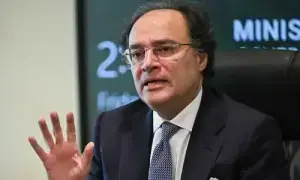

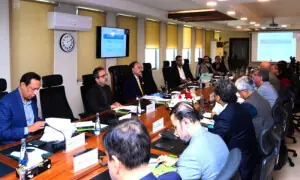
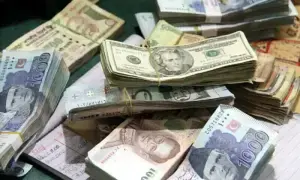











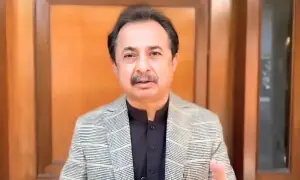

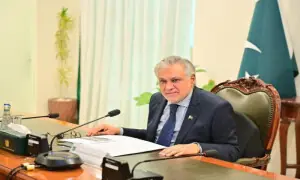
Comments are closed on this story.